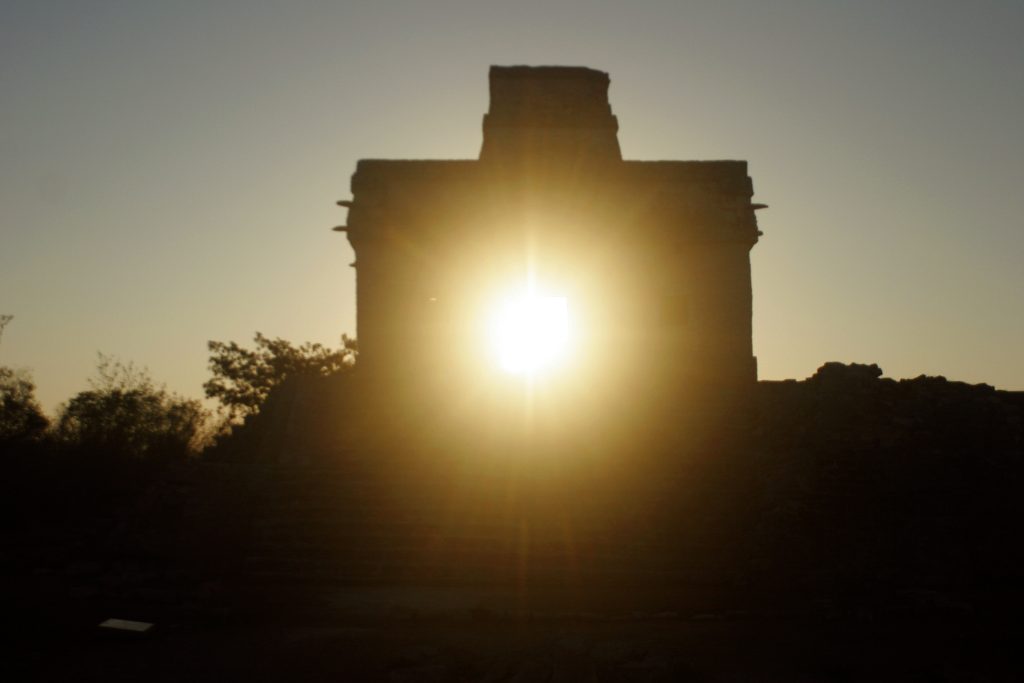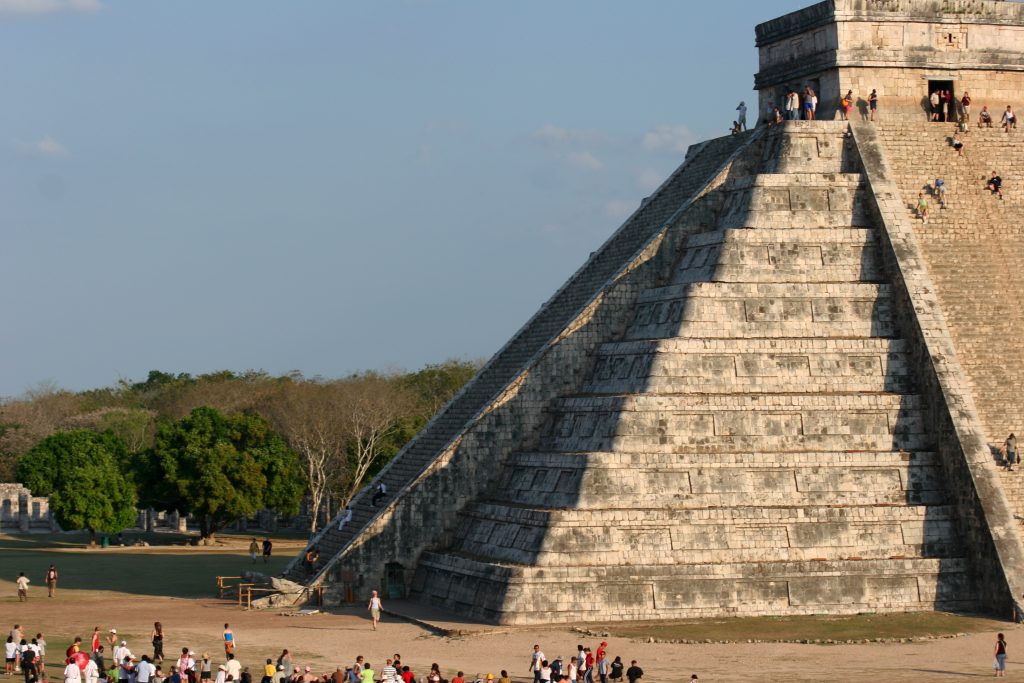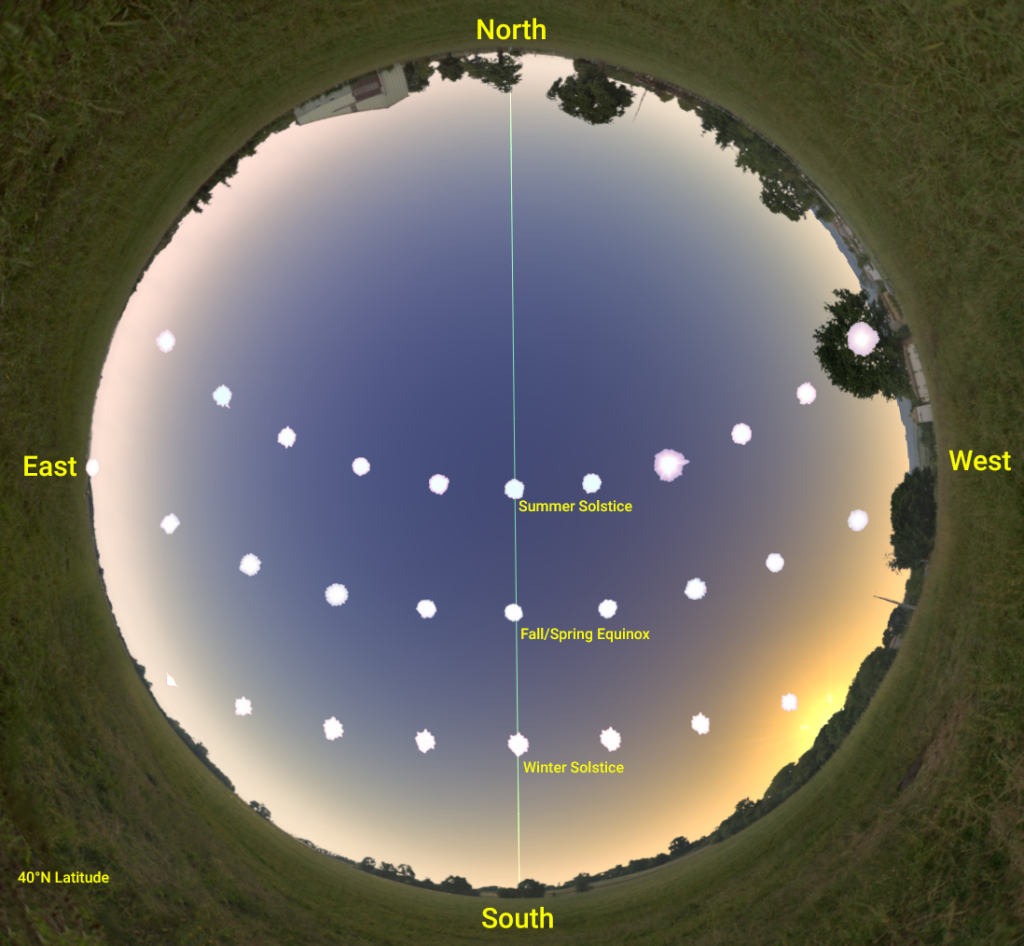Seasonal Motion
The locations on the horizon where the Sun rises and sets changes in a repeating pattern. The height of the midday Sun in the sky changes along with that same pattern. The length of time the Sun spends in the sky also changes with this pattern. We call this repeating pattern the cycle of the seasons.
As viewed from the northern hemisphere of Earth, on the first day of spring, the Sun rises directly in the east, spends 12 hours in the sky and sets directly in the west. In the height of summer, the Sun rises in the northeast, spends the longest time in the sky, and sets in the northwest. On the first day of autumn, the Sun rises directly in the east again, spends 12 hours in the sky, and sets directly in the west. In the depths of winter, the Sun rises in the southeast, spends the least amount of time in the sky, and sets in the southwest. The cycle then completes with a return to spring. The experience of the seasons is reversed for the southern hemisphere of Earth. When it is summer for Europe it is winter for Australia. When it is winter for North America it is summer for South America.
During this cycle another changing pattern is where amongst the stars the Sun can be seen, and which constellations of stars are visible at night. All of these changes are caused by Earth’s orbit around the Sun. It takes one year for the Earth to complete one trip around the Sun. The direction in space where the night side of Earth points changes with this motion, which changes when during the day different constellations can be seen.
Also, the direction in space where Earth’s north pole points is not aligned with Earth’s orbit around the Sun. We call this Earth’s tilt. The tilt stays pointed in the same direction in space while Earth orbits the Sun. This makes Earth’s north pole change its orientation to the Sun during a year and causes all of the seasonal variations we observe.
Activities
Hands-On
- Ancient Sun Observation - Make your own Sun tracker to explore how ancient civilizations around the world studied the Sun
- Kinesthetic Astronomy - Through simple body movements, learners gain insight into the relationship between time and motions of Earth
- Make Your Own El Castillo - Build a foam core model of the great pyramid at Chichen Itza used to celebrate solar events
- Solar Alignments at El Castillo - Use a model to recreate alignments of the Sun with the great pyramid of Chichen Itza
- Seasons of Solar Panels - Use a globe and solar cells to demonstrate how solar energy reaching the Earth changes with the seasons
Online
- Stellarium - software for desktops, mobile devices, and web browsers that simulates the sky from anywhere on Earth across thousands of years.
- Seasons Interactive - This simulator (from LHS SEPUP) demonstrates how the tilt of Earth’s rotation axis creates variations in daylight hours and temperature throughout the year
- Seasons Simulator - This simulator (from the Khan Academy) demonstrates how the tilt of Earth’s rotation axis creates variations in daylight hours and sunlight intensity throughout the year




